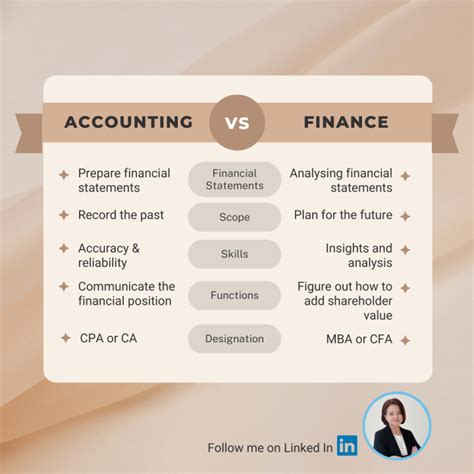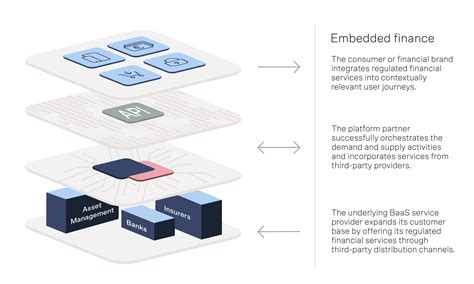
Elasticity, in economics and finance, describes the responsiveness of one variable to a change in another. It’s a crucial concept for understanding how markets react to price fluctuations, income shifts, and other influencing factors. Instead of simply observing that one variable changes when another does, elasticity quantifies the *degree* of that change, offering a more nuanced and actionable insight.
The most common type is price elasticity of demand, measuring how much the quantity demanded of a good or service changes in response to a change in its price. If demand is highly elastic (elasticity greater than 1), a small price increase will lead to a significant decrease in quantity demanded. This is typical for goods with many substitutes, like different brands of coffee. Conversely, if demand is inelastic (elasticity less than 1), a price change will have a relatively small impact on quantity demanded. Essential goods, like life-saving medication, often exhibit inelastic demand.
Formulaically, price elasticity of demand is calculated as: (% Change in Quantity Demanded) / (% Change in Price) Using percentages standardizes the calculation, allowing for comparisons across different goods and services regardless of their initial prices or quantities.
Beyond price elasticity of demand, other important elasticity concepts exist in finance. Income elasticity of demand measures how quantity demanded changes in response to changes in consumer income. A positive income elasticity indicates a normal good (demand increases as income increases), while a negative income elasticity indicates an inferior good (demand decreases as income increases). Luxury goods typically have high, positive income elasticity.
Cross-price elasticity of demand measures how the quantity demanded of one good changes in response to a change in the price of another good. If the cross-price elasticity is positive, the goods are substitutes (like tea and coffee). If it’s negative, the goods are complements (like coffee and sugar).
Price elasticity of supply measures how the quantity supplied of a good changes in response to a change in its price. A highly elastic supply means that producers can quickly adjust their output in response to price changes, whereas an inelastic supply means they are constrained by factors like limited resources or production capacity.
Understanding elasticity is vital for decision-making. Businesses use it to optimize pricing strategies. For example, if demand for a product is inelastic, a company might increase prices to boost revenue without significantly impacting sales volume. Conversely, if demand is elastic, a price reduction might be more effective at increasing revenue. Governments use elasticity to predict the impact of taxes and subsidies. Investors consider elasticity when analyzing market trends and predicting the performance of different assets.
Several factors influence elasticity. The availability of substitutes is crucial; more substitutes generally lead to higher elasticity. The proportion of income spent on a good also matters; a good that represents a significant portion of a consumer’s budget tends to be more elastic. Time horizon is another factor; demand is generally more elastic in the long run as consumers have more time to adjust their behavior and find alternatives. Finally, whether a good is a necessity or a luxury plays a role, with necessities typically having lower elasticity.
In conclusion, elasticity provides a powerful framework for understanding and quantifying the responsiveness of economic variables. By considering the factors influencing elasticity, businesses, governments, and investors can make more informed and effective decisions in a dynamic and ever-changing market environment.
 1000×667 financial financial pahang skills development centre from www.pahangskills.gov.my
1000×667 financial financial pahang skills development centre from www.pahangskills.gov.my
 1400×1050 limportanza strategica del rendiconto finanziario yourcfo from www.yourcfo.it
1400×1050 limportanza strategica del rendiconto finanziario yourcfo from www.yourcfo.it
 3920×1960 growth strategy business graph analysis concept finance chart data from www.vecteezy.com
3920×1960 growth strategy business graph analysis concept finance chart data from www.vecteezy.com
 1920×1200 financial management concept investment flat design payment from www.vecteezy.com
1920×1200 financial management concept investment flat design payment from www.vecteezy.com
 1920×1280 guide venture capital financing roseryan from roseryan.com
1920×1280 guide venture capital financing roseryan from roseryan.com
 3640×2410 finance system icons symbols finance illustrations creative from creativemarket.com
3640×2410 finance system icons symbols finance illustrations creative from creativemarket.com
 4404×2906 personal finance corporate finance main difference from virtualggc.com
4404×2906 personal finance corporate finance main difference from virtualggc.com
 1600×1690 finance function business refers functions intended from www.dreamstime.com
1600×1690 finance function business refers functions intended from www.dreamstime.com
 1920×1081 economy finance background financial business statistics from www.vecteezy.com
1920×1081 economy finance background financial business statistics from www.vecteezy.com
 1200×630 artificial intelligence impacting finance from www.chaserhq.com
1200×630 artificial intelligence impacting finance from www.chaserhq.com
 1920×1080 embedded finance examples brimco from www.brimco.io
1920×1080 embedded finance examples brimco from www.brimco.io
 1920×1080 manage personal finance beginners guide from blog.shoonya.com
1920×1080 manage personal finance beginners guide from blog.shoonya.com
 1200×1003 microsoft power platform smrtr maak je werk sneller slimmer en leuker from smrtr.nl
1200×1003 microsoft power platform smrtr maak je werk sneller slimmer en leuker from smrtr.nl
 2560×1969 top ai tools accounting marktechpost from www.marktechpost.com
2560×1969 top ai tools accounting marktechpost from www.marktechpost.com
 1200×628 business finance definition benefits types razorpay capital from razorpay.com
1200×628 business finance definition benefits types razorpay capital from razorpay.com
 2000×1250 finance wallpapers wallpaperdog from wallpaper.dog
2000×1250 finance wallpapers wallpaperdog from wallpaper.dog
 4000×3000 lhistoire de la finance histoire evolutions from www.wmag-finance.fr
4000×3000 lhistoire de la finance histoire evolutions from www.wmag-finance.fr
 1920×1440 cases chatgpt finance fusemachines insights from insights.fusemachines.com
1920×1440 cases chatgpt finance fusemachines insights from insights.fusemachines.com
 961×574 embedded finance examples benefits opportunities from happay.com
961×574 embedded finance examples benefits opportunities from happay.com
 1024×975 finance animation explained keystone media from keystonemediahq.com
1024×975 finance animation explained keystone media from keystonemediahq.com
 1000×750 finance outsourcing comprehensive guide pros cons from www.hirewithnear.com
1000×750 finance outsourcing comprehensive guide pros cons from www.hirewithnear.com
 1920×1920 icone financeiro png from pt.vecteezy.com
1920×1920 icone financeiro png from pt.vecteezy.com
 720×720 accounting finance from www.linkedin.com
720×720 accounting finance from www.linkedin.com
 3888×2592 personal finance from www.love-and-i.com
3888×2592 personal finance from www.love-and-i.com
 1600×840 personal finance software paid from shawnmanaher.com
1600×840 personal finance software paid from shawnmanaher.com
 1200×673 blurry glow background images hd pictures wallpaper from pngtree.com
1200×673 blurry glow background images hd pictures wallpaper from pngtree.com
 1600×1051 defi decentralized finance blockchain decentralized financial system from www.dreamstime.com
1600×1051 defi decentralized finance blockchain decentralized financial system from www.dreamstime.com
 1633×980 kawaii finance sticker business finance elements doodle finance from www.vecteezy.com
1633×980 kawaii finance sticker business finance elements doodle finance from www.vecteezy.com
 1200×628 finance bill kenya highlights from ronalds.co.ke
1200×628 finance bill kenya highlights from ronalds.co.ke
 1920×1152 grow money clipart vector design illustration yellow golden coin from www.vecteezy.com
1920×1152 grow money clipart vector design illustration yellow golden coin from www.vecteezy.com
 2560×1382 behavioral finance understanding biases tips overcoming from insights.masterworks.com
2560×1382 behavioral finance understanding biases tips overcoming from insights.masterworks.com
 1920×1920 set money finance icon logo vector illustration finance pack symbol from www.vecteezy.com
1920×1920 set money finance icon logo vector illustration finance pack symbol from www.vecteezy.com
 2400×1256 quick glance sources finance start from razorpay.com
2400×1256 quick glance sources finance start from razorpay.com
 1200×768 finance commission india functions article qualifications from www.studyiq.com
1200×768 finance commission india functions article qualifications from www.studyiq.com
 2240×1260 guide structuring finance team cfo hub from cfohub.com
2240×1260 guide structuring finance team cfo hub from cfohub.com
 1500×1000 bangkok post unlocking power sustainable finance from www.bangkokpost.com
1500×1000 bangkok post unlocking power sustainable finance from www.bangkokpost.com
 1766×986 finance definition studyslopecom from studyslope.com
1766×986 finance definition studyslopecom from studyslope.com
 1024×576 ways manage personal finances from hbr.org
1024×576 ways manage personal finances from hbr.org
 1184×860 financial economics methods models faqs from www.vedantu.com
1184×860 financial economics methods models faqs from www.vedantu.com
 1200×627 revolutionizing finance ai automating financial services from aihorrorstories.blogspot.com
1200×627 revolutionizing finance ai automating financial services from aihorrorstories.blogspot.com
 1920×1920 icono de gestion de finanzas negocios de dibujos animados vectoriales from es.vecteezy.com
1920×1920 icono de gestion de finanzas negocios de dibujos animados vectoriales from es.vecteezy.com
 1720×918 top finance job titles ongig blog from blog.ongig.com
1720×918 top finance job titles ongig blog from blog.ongig.com
 2160×1215 finance career from ar.inspiredpencil.com
2160×1215 finance career from ar.inspiredpencil.com
 1024×576 structured finance work leia aqui from fabalabse.com
1024×576 structured finance work leia aqui from fabalabse.com
 1600×1600 financial logos from animalia-life.club
1600×1600 financial logos from animalia-life.club
 960×540 public finance powerpoint template from www.collidu.com
960×540 public finance powerpoint template from www.collidu.com
 960×540 decentralized finance defi powerpoint template from www.collidu.com
960×540 decentralized finance defi powerpoint template from www.collidu.com
 4800×6592 applications generative ai financial services cb insights from www.cbinsights.com
4800×6592 applications generative ai financial services cb insights from www.cbinsights.com
 1920×1120 vector cartoon business finance management icon comic style from www.vecteezy.com
1920×1120 vector cartoon business finance management icon comic style from www.vecteezy.com
 1000×563 finance software personal business from happay.com
1000×563 finance software personal business from happay.com
 2251×2251 supply chain finance work importance from www.dripcapital.com
2251×2251 supply chain finance work importance from www.dripcapital.com
 2560×1645 healthcare finance management comprehensive guide from avonriverventures.com
2560×1645 healthcare finance management comprehensive guide from avonriverventures.com
 1000×833 modern financial logo design idea stock vector adobe stock from stock.adobe.com
1000×833 modern financial logo design idea stock vector adobe stock from stock.adobe.com
 1600×900 from www.pwc.tw
1600×900 from www.pwc.tw
 1201×1501 corporate financeth edition global edition softarchive from softarchive.is
1201×1501 corporate financeth edition global edition softarchive from softarchive.is
 3700×2220 money management firms board embedded finance heres from www.solarisgroup.com
3700×2220 money management firms board embedded finance heres from www.solarisgroup.com